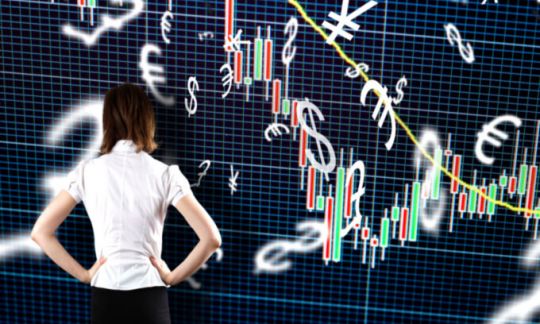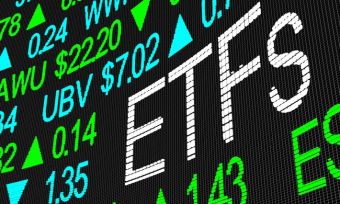Three ETF comparisons: Vanguard’s VAS vs VGS vs VDHG

If you’re looking to invest in Exchange Traded Funds (ETFs), you might be considering some of those offered by Vanguard. With share markets globally in a topsy turvy state, some of the Vanguard ETFs offer a range of diversified investments in both the local share market and overseas. So what’s on offer?
First, a quick recap on what is an ETF. An ETF is a managed fund that typically tracks a stock index or sector. You can also get ETFs that track a commodity, bond or a range of assets.
ETFs are traded in Australia on the Australian Securities Exchange (ASX). When you buy into an ETF you are buying shares of a portfolio that tracks the yield and return of its corresponding index or asset.
Read more: What is an Exchange Traded Fund (ETF)?
For example, when you buy into an ETF that tracks the ASX 200, you are in effect buying a little bit of each of the top 200 companies traded on the ASX.
ETFs are not limited to companies listed on the ASX. They can include a range of investments including overseas companies or even physical assets such as gold, but because they are listed on the ASX they can be traded just like any other shareholding when the market is open.
It’s this ability for an ETF to hold a diversified range of investments that can make them attractive as they generally spread the risk with the potential for growth and dividend payments. But just like any ASX shareholding, prices can rise and fall, they may pay no dividends at all, and past performance is no guarantee of future performance.
Read more: Pros and cons of exchange traded funds (ETFs)
What does Vanguard offer in ETFs?
Vanguard has $36.6 billion in funds under management and is the largest player in the Australian Exchange Traded Product (ETP) market that includes ETFs, according to ASX data for June 2022.
The company has been offering ETFs in Australia since 2009 and, at the time of writing, lists up to 30 different funds covering a wide variety of investment options.
Here we take a look at three different options listed on the ASX:
- Vanguard Australian Shares Index ETF (ASX:VAS)
- Vanguard MSCI Index International Shares ETF (ASX:VGS)
- Vanguard Diversified High Growth Index ETF (ASX:VDHG).
So you have the option of investing in a fund that holds shares in largely Australian companies, another fund that invests in international markets, and a third fund that doesn’t look to specific companies but looks at other Vanguard funds, so basically it’s a fund of funds
Let’s take a closer look at each ETF to see what they actually track and how they’ve been performing.
Is Vanguard Australian shares VAS a good investment?
The VAS fund is the single largest ETF listed on the ASX and had about $10.4 billion in funds under management in the June 2022 ASX data.
It’s been running since May 2009 and seeks to track the return of the S&P/ASX 300 Index – a measure of up to 300 of Australia’s largest securities by market capitalisation – before taking into account any fees, expenses and tax. Management fees are estimated at 0.1% a year.
The top 10 holdings according to the fund’s ASX listing (at the time of writing) are:
BHP (ASX:BHP), the Commonwealth Bank (ASX:CBA), CSL (ASX:CSL), National Australia Bank (ASX:NAB), Westpac Bank (ASX:WBC), Australia and New Zealand Bank (ASX:ANZ), Macquarie Group (ASX:MQG), Wesfarmers (ASX:WES), Telstra (ASX:TLS) and the Transurban Group (ASX:TCL).
How has Vanguard’s VAS fund performed?
Vanguard’s VAS fund performance has kept pretty close to its benchmark, the S&P/ASX 300 Index, since the fund started back in May 2009.
Unfortunately that means the fund is not doing so well at the moment as the sharemarket in general has suffered some losses since February this year when Russia invaded Ukraine.
The only positive here (if you can call it that) is that the fund was still keeping pace with its benchmark, doing no worse (and no better) in the year to date in 2022.
That said, the fund has performed better over the longer term. Vanguard tracks what $10,000 invested in VAS five years ago would be worth today. For example, if it was invested in June 2017 it would be worth about $13,950 in June 2022, an increase of $3,950 or 39.5%.
A look at the ASX closing price of units in Vanguard’s VAS in the year to date shows it’s also taken a few dips this year.
Is Vanguard’s International Shares VGS a good investment?
The VGS fund had about $4.4 billion in funds under management in the June 2022 ASX data.
It’s been running since November 2014 and seeks to track the return of the MSCI World ex-Australia (with net dividends reinvested) in Australian dollars Index, before taking into account fees, expenses and tax. The index captures mainly large companies across 22 of 23 developed markets countries, excluding Australia. Management fees are estimated at 0.18% a year.
Given its international objective the fund has holdings in companies across the globe including places such as Japan, the United Kingdom, Canada and Switzerland. But the vast majority are in the United States, giving it access to some of the big global tech giants.
The fund far outstrips VAS in terms of the number of companies VGS is invested with – almost 1,500 worldwide, including some big names. The top 10 holdings, according to the fund’s ASX listing (at the time of writing) are:
Apple (NASDAQ:AAPL), Microsoft (NASDAQ:MSFT), Amazon (NASDAQ:AMZN), Alphabet (NASDAQ:GOOGL), Tesla (NASDAQ:TSLA), another Alphabet (NASDAQ:GOOG) (with no voting rights), Johnson & Johnson (NYSE:JNJ), UnitedHealth (NYSE:UNH), NVIDIA (NASDAQ:NVDA) and Meta (NASDAQ:FB).
It also includes holdings in some other big hitters including billionaire Warren Buffett’s Berkshire Hathaway (NYSE:BRK.A), Swiss food giant Nestle (SWX:NESN) and the UK’s pharmaceutical giant AstraZeneca (LON:AZN).
How has Vanguard’s VGS fund performed?
Vanguard’s VGS fund performance has also kept pretty close to its benchmark since the fund started back in November 2014. Unfortunately it suffered this year around the time tech stocks were hit particularly hard in January, ahead of the Russian invasion of Ukraine.
The NASDAQ reportedly posted its worst January since 2008, around the time of the Global Financial Crisis.
Again though the VGS fund was still keeping pace with its benchmark, doing no worse (and no better) in the year to date in 2022.
As with the VAS fund, Vanguard tracks what $10,000 invested in VGS five years ago would be worth today. For example, if it was invested in June 2017 it would be worth about $16,252 in June 2022, an increase of $6,252 or 62.52%.
A look at the ASX listed closing price of units in Vanguard’s VGS over the year to date shows it’s also taken a few dips this year.
Is Vanguard’s diversified high growth VDHG a good investment?
The VDHG fund has about $1.6 billion in funds under management in the June 2022 ASX data.
The two previous funds, VAS and VGS, looked at spreading the investment load across a number of listed companies either in Australia or overseas. This fund, the VDHG, looks at other Vanguard funds, so basically it’s a fund of its own funds.
Vanguard says its target is investors seeking “long term capital growth, and with a higher tolerance for the risks associated with share market volatility”.
Vanguard’s VDHG is measured against a High Growth Composite Index, a tailored benchmark tracking the weighted average return of the various indices of the underlying funds in which it invests. Management fees are estimated at 0.27% a year.
The fund has seven holdings, according to the fund’s ASX listing (at the time or writing) and they are Vanguard’s index funds for:
- Australian Shares
- two different funds for International Shares
- Global Aggregate Bonds
- International Small Companies
- Emerging Markets Shares, and
- Australian Fixed Interest.
How has Vanguard’s VDHG fund performed?
It’s perhaps no surprise that Vanguard’s VDHG performance has also taken a tumble in performance this year given what’s happened to the VAG and VGS funds.
Interestingly though, it’s always performed slightly worse than its own benchmark since the fund started in November 2017.
Vanguard tracks what $10,000 invested in VDHG three years ago would be worth today. For example, if it was invested in June 2019 it would be worth about $11,472 in June 2022, an increase of $1,472 or 14.72 %.
A look at the ASX listed closing price of units in Vanguard’s VDHG over the year to date also shows it’s also taken a few dips this year.
Should I invest in an ETF?
Whether or not you should invest in any EFT depends on your own circumstances and how comfortable you are with taking a risk. While these ETFs from Vanguard above are an example of what you may be able to achieve over time they also show the potential for losses.
Their aim is to follow closely their benchmark targets and if those benchmarks fall, then so too will the associated ETF.
That said, with interest rates relatively low, but slowly rising, for savings accounts and term deposits, the long-term benefits of an ETF may be attractive.
Whatever your circumstances though, you would be wise to seek some independent professional advice before taking any action.
Tiger Broker’s Chief Strategy Officer, Michael McCarthy, told Canstar that ETFs can be a powerful investment tool.
“Diversification is a risk management tool that is available to all investors, and ETFs offer exposure to a range of investments in a single transaction, meaning lower transaction costs,” he said.
But he urged caution as not all EFTs were alike and as a potential investor you should look carefully at what’s offered and at what they cost in fees and management expenses.
“Prospective investors should consider the benchmark that is being tracked – an index, a sector, a basket of stocks etc. – and examine how well the ETF has performed against its stated aims in the past,” he added.
You should also read any documents associated with an ETF including its Product Disclosure Statement (PDS) and any Target Market Determinations (TMD).
All figures quoted above are subject to frequent changes.
Cover image source: Semisatch/Shutterstock.com
This article was reviewed by our Sub Editor Tom Letts before it was updated, as part of our fact-checking process.

Michael is an award-winning journalist with more than three decades of experience. As a senior finance journalist at Canstar, Michael wrote more than 100 articles covering superannuation, savings, wealth, life insurance and home loans. His work's been referenced by a number of other finance publications, including Yahoo Finance and The Motley Fool.
Michael's worked as a reporter and producer for the BBC and ABC, including for Australian Story. He's also worked as a feature writer for The Courier-Mail and as a science and technology editor and commissioning editor at The Conversation.
Michael's professional awards include a Queensland Media Award and a highly commended in the Walkleys. In 2021 he was part of a team that was a finalist in the Australian Museum Eureka Prize for Science Journalism. He holds a Bachelor of Science in mathematics and applied physics (Manchester Metropolitan University) and a Masters of Science in pure mathematics (Liverpool University).
- What does Vanguard offer in ETFs?
- Is Vanguard Australian shares VAS a good investment?
- How has Vanguard’s VAS fund performed?
- Is Vanguard’s International Shares VGS a good investment?
- How has Vanguard’s VGS fund performed?
- Is Vanguard’s diversified high growth VDHG a good investment?
- How has Vanguard’s VDHG fund performed?
- Should I invest in an ETF?




